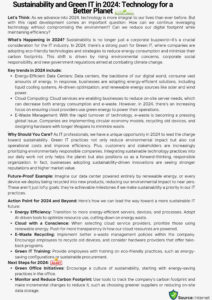— –
–
Introduction:
In the ever-evolving landscape of modern business, the ability to manage projects effectively has become a cornerstone of success. From small startups to multinational corporations, organizations of all sizes and industries rely on efficient project management to drive innovation, meet deadlines, and achieve their strategic objectives. However, the traditional methods of project management, characterized by cumbersome spreadsheets, endless email chains, and manual tracking, are increasingly proving inadequate in the face of today’s complex and dynamic projects.
In today’s fast-paced and interconnected world, the ability to manage projects efficiently and effectively is paramount to the success of businesses, organizations, and teams. As the complexity of projects continues to grow, traditional methods of project management are proving inadequate in meeting the demands of modern workflows. Enter project management software, the transformative tool that is revolutionizing productivity and empowering teams to navigate the digital frontier with ease.
The Evolution of Project Management: From Pen and Paper to Digital Solutions
The practice of project management has a long and storied history, dating back to ancient civilizations where large-scale projects such as the construction of the pyramids were meticulously planned and executed. Over the centuries, project management methodologies and techniques evolved, culminating in the formalization of project management as a discipline in the 20th century.
Early project management methods relied heavily on manual processes, with project managers using pen and paper, spreadsheets, and rudimentary tools to plan, track, and manage projects. While these methods served their purpose in simpler times, they were ill-equipped to handle the growing complexity and scale of modern projects.
The Rise of Project Management Software: Empowering Collaboration and Efficiency
The advent of digital technology transformed the landscape of project management, ushering in an era of innovation and efficiency. Project management software emerged as the solution to the shortcomings of traditional methods, offering a comprehensive suite of tools and features designed to streamline project workflows, enhance collaboration, and improve productivity.
From the early days of desktop-based project management software to the rise of cloud-based solutions, the evolution of project management software has been marked by continuous innovation and adaptation to the changing needs of businesses and teams. Today, project management software is more powerful and sophisticated than ever before, with advanced capabilities such as task tracking, resource management, Gantt charts, and real-time collaboration.
Key Features and Functionality: Empowering Teams to Thrive
At the heart of project management software lies a rich array of features and functionality designed to empower teams to thrive in the digital age. Task management tools enable teams to create, assign, and track tasks with ease, ensuring that everyone is aligned and accountable for their responsibilities. Time tracking functionality allows for accurate monitoring of project progress and resource allocation, helping to identify bottlenecks and optimize workflows.
Gantt charts provide a visual representation of project timelines and dependencies, enabling project managers to plan and schedule tasks effectively. Collaboration tools such as file sharing, messaging, and commenting facilitate seamless communication and knowledge sharing among team members, regardless of their geographical location or time zone.
Integration and Interoperability: Creating a Unified Ecosystem
In addition to its standalone capabilities, project management software is designed to integrate seamlessly with other business systems and tools, creating a unified ecosystem that enhances efficiency and productivity across the organization. Integration with email, calendar, and productivity suites such as Microsoft Office and Google Workspace allows for seamless data exchange and synchronization, reducing the need for manual data entry and duplication of effort.
Furthermore, project management software can be integrated with specialized tools and platforms for specific project needs, such as design software, development environments, and customer relationship management (CRM) systems. This interoperability enables teams to leverage the full power of their existing tools and systems within the context of their project management workflows, maximizing productivity and collaboration.
The Human Element: Fostering Collaboration and Empowerment
While project management software provides a wealth of features and functionality, its true value lies in its ability to empower teams and individuals to collaborate effectively and achieve their goals. By centralizing project information and communication in a single platform, project management software fosters transparency, accountability, and alignment among team members, regardless of their roles or responsibilities.
Moreover, project management software empowers team members to take ownership of their work, collaborate with colleagues, and contribute to the success of the project. Features such as task assignments, deadlines, and progress tracking provide clear visibility into individual and team performance, enabling managers to identify strengths, address weaknesses, and provide support where needed.
Overcoming Challenges and Driving Success: Strategies for Implementation
While the benefits of project management software are undeniable, its successful implementation requires careful planning, stakeholder engagement, and change management. Organizations must invest time and resources in selecting the right software solution that aligns with their unique needs and objectives, considering factors such as scalability, usability, and cost.
Moreover, organizations must prioritize user adoption and provide adequate training and support to ensure that team members are equipped with the skills and knowledge to effectively utilize the software. Communication and collaboration are key throughout the implementation process, with stakeholders at all levels involved in decision-making and feedback loops established to address concerns and iterate on solutions.
Looking Ahead: The Future of Project Management Software
As technology continues to evolve and business environments change, the future of project management software looks promising. Advancements in artificial intelligence, machine learning, and predictive analytics hold the potential to further enhance the capabilities of project management software, enabling teams to automate routine tasks, anticipate project risks, and make data-driven decisions.
Moreover, as the global workforce becomes increasingly distributed and remote, project management software will play a crucial role in facilitating collaboration and communication among geographically dispersed teams. Features such as virtual workspaces, video conferencing, and mobile accessibility will become increasingly important, enabling teams to stay connected and productive regardless of their location or device.
Conclusion: Empowering Teams to Thrive in the Digital Age
In conclusion, project management software represents a paradigm shift in the way teams plan, execute, and collaborate on projects. By harnessing the power of digital technology, project management software empowers teams to navigate the complexities of modern workflows with ease, efficiency, and confidence. From task management and scheduling to collaboration and reporting, project management software provides the tools and capabilities needed to drive success in today’s fast-paced and interconnected world. As organizations embrace the digital transformation and adapt to the demands of the digital age, project management software will continue to play a pivotal role in shaping the future of work and empowering teams to thrive in the digital age.
—






